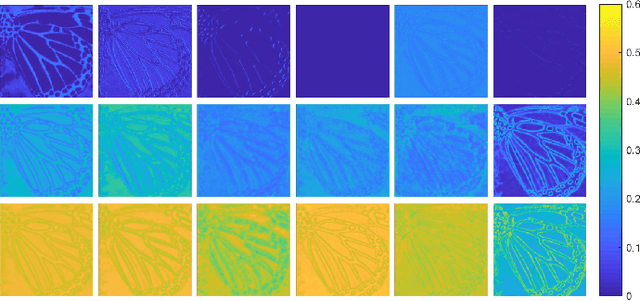Karam Park
Efficient Attention-Sharing Information Distillation Transformer for Lightweight Single Image Super-Resolution
Jan 27, 2025Abstract:Transformer-based Super-Resolution (SR) methods have demonstrated superior performance compared to convolutional neural network (CNN)-based SR approaches due to their capability to capture long-range dependencies. However, their high computational complexity necessitates the development of lightweight approaches for practical use. To address this challenge, we propose the Attention-Sharing Information Distillation (ASID) network, a lightweight SR network that integrates attention-sharing and an information distillation structure specifically designed for Transformer-based SR methods. We modify the information distillation scheme, originally designed for efficient CNN operations, to reduce the computational load of stacked self-attention layers, effectively addressing the efficiency bottleneck. Additionally, we introduce attention-sharing across blocks to further minimize the computational cost of self-attention operations. By combining these strategies, ASID achieves competitive performance with existing SR methods while requiring only around 300K parameters - significantly fewer than existing CNN-based and Transformer-based SR models. Furthermore, ASID outperforms state-of-the-art SR methods when the number of parameters is matched, demonstrating its efficiency and effectiveness. The code and supplementary material are available on the project page.
A Dynamic Residual Self-Attention Network for Lightweight Single Image Super-Resolution
Dec 08, 2021



Abstract:Deep learning methods have shown outstanding performance in many applications, including single-image super-resolution (SISR). With residual connection architecture, deeply stacked convolutional neural networks provide a substantial performance boost for SISR, but their huge parameters and computational loads are impractical for real-world applications. Thus, designing lightweight models with acceptable performance is one of the major tasks in current SISR research. The objective of lightweight network design is to balance a computational load and reconstruction performance. Most of the previous methods have manually designed complex and predefined fixed structures, which generally required a large number of experiments and lacked flexibility in the diversity of input image statistics. In this paper, we propose a dynamic residual self-attention network (DRSAN) for lightweight SISR, while focusing on the automated design of residual connections between building blocks. The proposed DRSAN has dynamic residual connections based on dynamic residual attention (DRA), which adaptively changes its structure according to input statistics. Specifically, we propose a dynamic residual module that explicitly models the DRA by finding the interrelation between residual paths and input image statistics, as well as assigning proper weights to each residual path. We also propose a residual self-attention (RSA) module to further boost the performance, which produces 3-dimensional attention maps without additional parameters by cooperating with residual structures. The proposed dynamic scheme, exploiting the combination of DRA and RSA, shows an efficient trade-off between computational complexity and network performance. Experimental results show that the DRSAN performs better than or comparable to existing state-of-the-art lightweight models for SISR.
 Add to Chrome
Add to Chrome Add to Firefox
Add to Firefox Add to Edge
Add to Edge